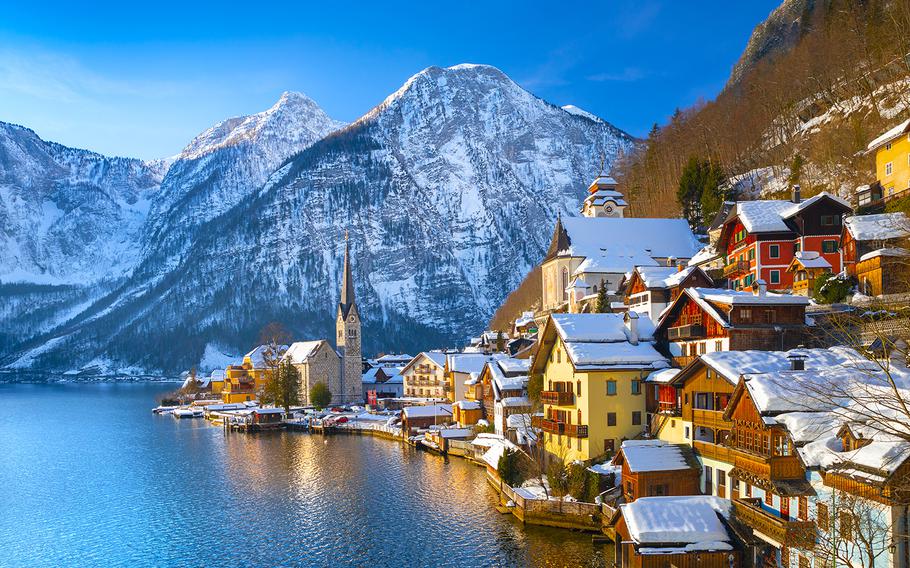
Salt deposits have been central to Austria’s Hallstatt for millennia. (iStock)
Of all the well-recognized labels a monument, city or landscape can bear, the United Nations Educational, Scientific and Cultural Organization (UNESCO) World Heritage Site designation is among the most prestigious. When a property is recognized as such, travel and tourism content creators are generally quick to highlight its vaunted status as a landmark that a highly respected international body has deemed to be of outstanding value to humanity and worthy of preservation.
While the title might imply that the site will be one of great beauty, that’s not necessarily the case. Sites nominated for inclusion on the list must be of “outstanding universal value” and meet one of 10 specific criteria pertaining to nature or culture. Among the most interesting sites are cultural landscapes, defined by the World Heritage Committee as cultural properties representing the combined works of man and nature. Two good examples in Europe include Germany’s Upper Middle Rhine Valley and Italy’s Cinque Terre.
Today we take a look at four European landscapes that might not be attractive in the traditional sense, but which tell a compelling story.
Champagne Hillsides, Houses and Cellars: The method of producing sparkling wines based on the principle of secondary fermentation in the bottle has been carried out in France’s Champagne region since the 17th century. The property is comprised of three distinct ensembles: the historic vineyards of Reims and its surrounding villages, along with the Avenue de Champagne and Fort Chabrol, both of which are in Epernay. These three components illustrate the breadth of the champagne production process.
The chalky land in which the grapevines thrive has everything to do with the establishment of the practices perfected here over centuries. The production process specific to Champagne, based on secondary fermentation in the bottle, required a vast network of cellars. In Reims, medieval chalk quarries were repurposed for the task, whereas in other places, vast underground landscapes were carved out of the soft rock. The Avenue of Champagne is lined with grandiose and prestigious houses of major Champagne makers above ground, while below, nearly 200 million bottles age gracefully. Online: maisons-champagne.com
Blaenavon Industrial Landscape: In the 19th century, this area in South Wales was one of the world’s major producers of iron and coal. The development of these two industries in parallel was one of the driving forces of the Industrial Revolution.
The Blaenavon Ironworks and Big Pit, other coal and ore mines, quarries and a landscape scarred by the exploitation of its mineral resources, a rudimentary railway system, canals, furnaces and workers’ homes paint a picture of the workings and social infrastructure of the early industrial community. The remains of the ironworks include furnaces, casting houses and ruined kilns in which iron ore was roasted. The water balance tower, built in 1839, illustrates how lift technology using water to counter-balance loads was employed. The coal mining pit and its infrastructure including the winding gear remains frozen in time from the moment coal production ceased back in 1980.
In the town of Blaenavon itself, the circa-1816 St. Peter’s School has been restored as the World Heritage Interpretation Centre. Online: visitblaenavon.co.uk
Vegaoyan – The Vega Archipelago: Just south of the Arctic Circle, Norway’s Vegaoyan, or Vega Archipelago, is a cluster of dozens of small islands bearing evidence of human settlement since the Stone Age. The islands bear testimony to a way of life based on fishing and the harvesting of the down of eider ducks carried out over the past 1,500 years. Fishing villages, quays, lighthouses, beacons, warehouses and eider houses built for nesting eider ducks attest to how humans have been able to sustain themselves in such an inhospitable environment.
For many of these fishermen-farmers, tending to eider ducks was central to their way of life. They built nests and shelters for the wild eider ducks that returned to the islands each spring, and protected them from disturbance during the breeding season. When the birds left their nests with their chicks, the eider down could be collected. Women played a key role in the practice, and a World Heritage Centre in the town of Vega pays tribute to their contributions. The down-gathering tradition remains alive today, albeit in a much curtailed form. The archipelago is also considered the most important wintering area for seabirds in the Nordic region. Online: verdensarvvega.no
Hallstatt-Dachstein/Salzkammergut: Human activity in the mountainous and visually stunning landscape of Austria’s Salzkammergut region dates back thousands of years, when the area’s salt deposits were already being exploited. Salt continued to form the basis of the area’s prosperity until the mid-20th century. Hallstatt, whose name means “salt settlement,” flourished in the 8th century B.C., when the highly organized Iron Age society enjoyed trade links across Europe. Following a devastating fire in 1750, Hallstatt was rebuilt in a late Baroque style. By the 19th century, the exceptional beauty of the alpine landscape had been discovered by artists and writers, and on their heels came tourists, leading to the development of hotels and spa facilities.
Visitors after a taste of the past can visit the Hallstatt Salt Mine, which traces the history of the mining of white gold in the area. Europe’s oldest wooden staircase, an underground cinema and the free-floating Skywalk, perched 1,000 feet above ground, are among the museum’s offerings. Online: salzwelten.at